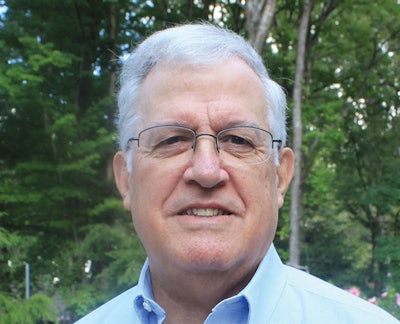How might your manufacturing evolve in the next 10 years or so? Once the exhibition part of PACK EXPO 2022 has wrapped up, you will have some ideas: Lower packaging material-to-content ratios, lighter packaging, more bio-based materials, mono-material structures, more digital production, automation, and robotics.
We say, “the exhibition part of PACK EXPO International” because the more critical part of the show–your follow-up–will determine whether and how the show’s ideas become realities for you. Smart managers who participated in the show recognize that its 30 exhibit hours were just the public demonstration portion of the event. The private exchanges that take place before, during, and after the exhibitions are more transactional, and vital, in determining what the future of your processing and packaging operations will be.
Successful business managers always approach PACK EXPO with a plan. The elements of which are pretty universal, and include these pre-show elements:
1. Weighing needs and considering options for current operations and future developments.
2. Determining who is going and assigning exhibit intelligence-retrieval assignments.
3. Putting together “must-see” exhibit lists and mapping out the most direct routes to suggestions/solutions they have for those operational needs and product developments.
No longer than one month after the show, a good plan should also include:
1. Conducting formal debriefings of attending teams to determine how their experiences match up to their show assignments.
2. Inviting top “current need” vendors/potential vendors to discuss opportunities.
3. Scouting the calendar for budgetary and technology-appropriate events to cover.
Today’s operations managers are pressured, as few earlier generations have been, to address demands beyond the walls of their production ops: The pandemic, the war in Ukraine, logistics logjams, the emerging silhouette of packaging as a regulatory target, loud objections to plastics—particularly single-use plastic packaging—and labor, fuel, and supply imbalances factor in. There are also the perceived environmental impacts of:
• Fit-for-purpose packaging materials.
• Rigid, semi-rigid and flexible primary, secondary and tertiary packaging formats.
• Single-use vs. refillable/reusable container operations, including after-use collection, QC checks, washing/sanitizing, and production line reintegration.
• Efficiency/energy use of alternative processing/packaging systems.
Packaging managers face these market demands knowing that few of them have any positive bearing on their operational efficiency or the processing and packaging needs of their customers. So, they have to ask themselves, what are the economic, operational, and systemic considerations of switching to refillable packaging? And how would a switch to flexible packaging compare to my rigid container packaging/processing line?
Questions like these, and answers offered during the portfolio of PACK EXPO shows produced by PMMI, provide insight into how the packaging market is changing as it evolves into the fourth decade of the 21st Century. It does seem likely that the increasingly sophisticated processing and packaging systems and materials technologies demonstrated at PACK EXPO shows will demand a more flexible and tech-savvy workforce and “back to the future” of packaging concepts, such as reusable containers in the decades ahead.
For food and beverage producers one thing this might mean is considering if refillables–a mid-20th Century mainstay for beverages–could, once again, be a thing for drinks, or food, or even pharmaceuticals by 2032.
Some packaging pros are preparing for the possible day when tethered closures, now being mandated for some European packages to improve their sustainability, may become an American phenomenon. But with no strong national packaging regulator in the U.S, beverage closure tethering is more likely to be driven by the environmental marketing interests of beverage makers, if it happens at all.
In their PACK EXPO 2022 follow-ups, some managers will try to determine whether two nascent technologies could play major roles in how we handle spent paper and plastic packaging in the future: First is the genetic tweaking of an enzyme called Ideonella Sakaiensis to speed (from weeks to days) the breakdown of polyethylene terephthalate (PET) into its constituent molecular components. The Centre for Enzyme Innovation at Portsmouth University in England is collaborating with the U.S. Department of Energy’s National Renewable Energy Lab in Colorado on the development. Commercializing the I. Sakaiensis process could be a post-consumer use boon to PET bottle makers and packers in the future.
The second emerging technology, chromatogeny, is according to Cellulotech, Inc., a Canadian material science company, “a green chemistry reaction process that renders paper products resistant to water, grease, and oxygen without affecting their recyclability or compostability.” The potential to develop recyclable and repulpable paper and board barrier packs that could compete with various plastic packaging formats has not been lost by its proponents.
Look for the commercial packaging debuts of these technologies to be preceded by appearances at PACK EXPO by 2032.
Ben Miyares, Packaging Sherpa, is a packaging market and technology analyst and is president of The Packaging Management Institute, Inc. He can be reached at [email protected].




























